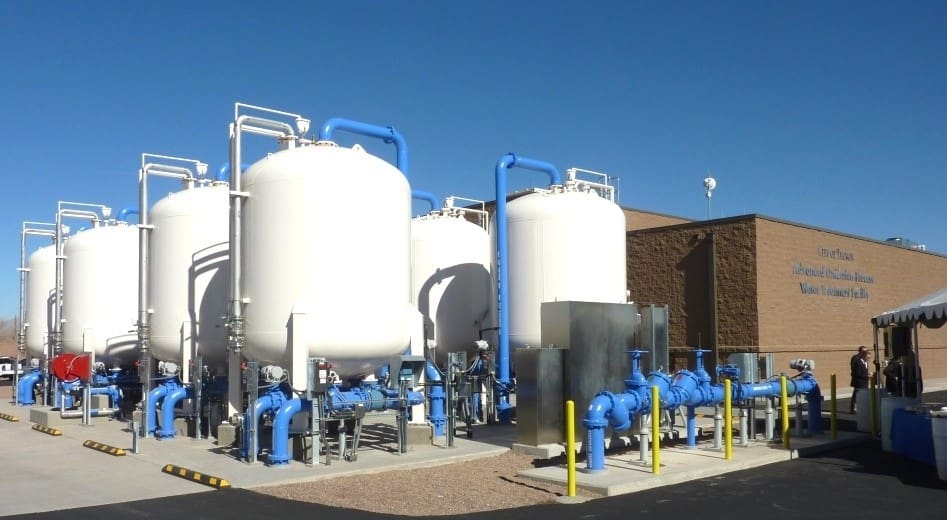How PFAS Treatment Reduces Environmental Impact and Improves Public Safety
Ingenious PFAS Therapy Solutions for Safer Water
The raising occurrence of PFAS contamination in water materials necessitates an essential assessment of cutting-edge treatment services. Additionally, arising bioremediation methods provide an even more lasting strategy to taking on PFAS obstacles. pfas management.
Introduction of PFAS Contamination
PFAS contamination has emerged as a significant environmental and public health and wellness concern. Per- and polyfluoroalkyl materials (PFAS) are a group of artificial chemicals recognized for their persistence in the atmosphere and human body, leading them to be generally referred to as "for life chemicals." These compounds have been commonly utilized in different markets, including firefighting foams, water-repellent fabrics, and food product packaging, mostly due to their water- and grease-resistant residential or commercial properties.
The extensive use PFAS has resulted in their discovery in dirt, water supplies, and also in the blood of human beings and pets. Researches have linked PFAS exposure to many health problems, including developing impacts in babies, immune system disorder, and various kinds of cancer cells. In addition, the environmental determination of these compounds complicates their degradation and elimination, raising problems concerning long-term ecological effects.
Governing bodies are significantly applying rigorous standards to keep track of and minimize PFAS degrees in drinking water and various other environmental tools. As recognition of PFAS contamination grows, it has come to be necessary for areas and sectors to look for reliable therapy solutions to minimize direct exposure and protect public health.
Advanced Filtration Technologies
As the necessity to resolve PFAS contamination increases, progressed filtration modern technologies have actually emerged as a pivotal element in the removal efforts intended at getting rid of these relentless chemicals from water resources. These modern technologies utilize advanced mechanisms to effectively target and record PFAS compounds, which are notoriously immune to conventional treatment approaches.
Among one of the most appealing approaches is making use of granular activated carbon (GAC), which adsorbs PFAS particles because of its high surface and permeable framework. This approach has actually been extensively executed in both municipal and industrial settings, showing substantial decreases in PFAS focus. Additionally, ion exchange materials have gotten traction, particularly created to uniquely bind PFAS ions from water, hence promoting their removal.
Membrane filtering technologies, such as reverse osmosis and nanofiltration, also show effectiveness in PFAS elimination by physically separating impurities from water - pfas management. These systems can attain high degrees of purity, making them suitable for drinking water applications
Chemical Treatment Advancements
Many chemical therapy developments are being discovered to efficiently attend to PFAS contamination in water products. One appealing method includes using innovative oxidation procedures (AOPs), which make use of effective oxidants such as ozone, hydrogen peroxide, or chlorine dioxide integrated with UV light to break down PFAS substances website link into less unsafe substances. This technique has actually shown efficacy in laboratory settings, showing possible for scalability in real-world applications.
Another innovative method is the go now advancement of ion-exchange resins especially developed to target PFAS. These resins can uniquely adsorb PFAS substances from water, enabling for their elimination during treatment procedures. Current improvements have actually boosted the performance and ability of these resins, making them a positive choice for water therapy facilities.
Furthermore, researchers are investigating using chemical agents like persulfate and ferrous ions to enhance the degradation of PFAS in contaminated water. These agents can cause chain reaction that help with the break down of consistent PFAS substances.
Emerging Bioremediation Strategies
Recent advancements in chemical treatment advancements have led the way for checking out bioremediation methods as a viable choice for resolving PFAS contamination. Bioremediation harnesses the all-natural metabolic processes of microbes to break down or transform pollutants, making it an attractive approach for dealing with consistent impurities like PFAS.
Emerging strategies in bioremediation consist of using genetically engineered microorganisms that can especially target and damage down PFAS compounds. These microbial strains are being established for their boosted destruction capabilities, enhancing the performance of the removal process. Additionally, researchers are examining the capacity of plant-assisted bioremediation, where specific plant types may uptake and sequester PFAS from contaminated soil and water.
One more promising approach is the application of bioaugmentation, which entails presenting advantageous bacteria right into infected settings to improve the deterioration of PFAS. This method can promote quicker remediation timelines and boost general efficiency.

Regulatory Structures and Specifications
A thorough regulative framework is necessary for properly handling PFAS contamination and making sure public health and wellness protection. The increasing recognition of per- and polyfluoroalkyl substances (PFAS) as toxic wastes has actually triggered numerous federal and state firms to establish standards that regulate their existence in water supplies. The U.S. Environmental Protection Agency (EPA) has established health advisories and is pursuing setting enforceable limits for PFAS anchor in alcohol consumption water.
State-level guidelines differ dramatically, with some states taking on stricter guidelines than those suggested by the EPA. These laws often include optimum impurity levels (MCLs) for particular PFAS compounds, monitoring demands, and reporting commitments for water utilities. Furthermore, emerging structures concentrate on the remediation of polluted sites, emphasizing the demand for effective therapy technologies.

Conclusion
In final thought, the growth and application of cutting-edge PFAS treatment services are crucial for addressing the prevalent concern of water contamination. Advanced purification innovations, chemical therapies, and arising bioremediation techniques jointly provide a multifaceted method to successfully decrease and weaken PFAS levels. As governing structures remain to evolve, incorporating these technologies will be important to safeguard public health and bring back the integrity of contaminated water sources, ultimately adding to a cleaner and much safer atmosphere.